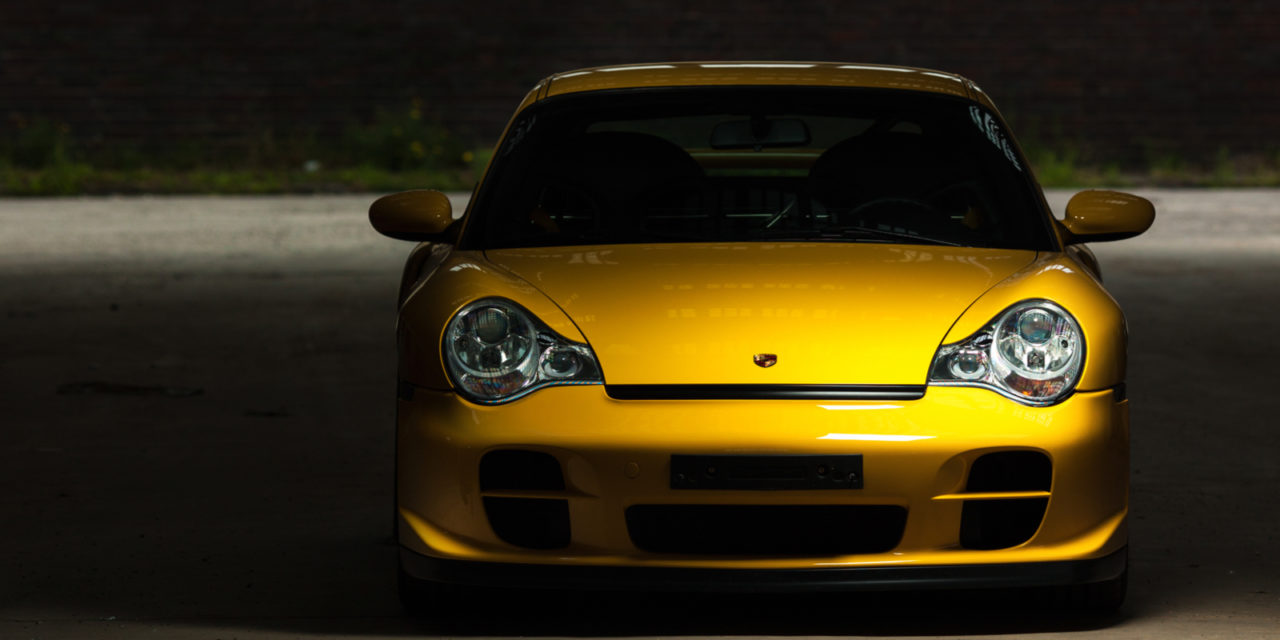There are no grey areas with the Porsche 996. Aficionados either hate the model or love it. Why? The casual car buff sees the classic styling and loves it. Hard-core Porsche fanatics hate the ugly duckling front headlamps and slant nose and dismiss the model altogether.
History of the 996
The fifth-generation 911 was a bold move for Porsche. The 996 was manufactured from 1997 to 2004, with a total production run of 175,262 vehicles. Three variants remained in production for the 2005 and 2006 model year, the Turbo S, GT-2, and GT-3.
After 34 years of air-cooled engine technology, the 996 was the first 911 model with a water-cooled power-plant. The air-cooled six-cylinder was reaching its full potential. Porsche had to make significant changes.
The 996 was an internal production designation. The model offered all-new chassis design and the first such upgrade since the original launch of the 911. At the time, Porsche was facing financial troubles, and the introduction of its multi-link suspension was a derivative from the 993 and saved on development costs.
The 996 solved a couple of issues for the manufacturer:
1) Production costs were reduced and overhauled. A worldwide parts compatibility process was implemented with other models, such as the Boxster.
2) The 996 prepared Porsche for stringent US Emissions standards.
Porsche gave the 996 a longer wheelbase and wider stance. The interior benefited with added elbow room and a more spacious interior. The company continued its break from tradition with the addition of a five-round instrument cluster.
Specs.
- Six-cylinder flat head naturally aspirated or turbo-charged
- 300 PS to 483 PS
- Max Torque 350 to 640 NM
- Acceleration 0-100 km in 4.1s
- Top Speed 175 mph to 198 mph
The revolution of the 996 was not just in the body, but also the engine. The standard four-valve six-cylinder was comparable to the 911 Turbo, which also received a revamped water-cooled engine. The impressive engine powered the 911 GT-1 to the 1998 LeMans Victory.
Models
The 996 was offered in a 2-door coupe, convertible, and Targa top. A 5-speed automatic and 6-speed manual transmission was made available to the public. Toyota contributed design and manufacturing assistance to Porsche to help implement the newly designed 996. The predecessor to the 996 was the Porsche 993, and the 997 came after.
The 996 was initially designed as a coupe, rear-wheel drive, and the all-wheel drive came later. The model came with a 3.4-liter flat-six and generated 296 hp.
The 996 turbo was introduced in 2000 and came equipped with a four-wheel-drive system. The 3.6-litre engine generated an awesome 420 hp, allowing the car to go from 0 to 60 in 4.2 seconds. Larger turbos and intercoolers were introduced two years later, upping the horsepower to 451.
The 2005 Porsche included the larger turbos as standard equipment and added ceramic brakes to the package.
The Porsche Turbo Cabriolet was introduced to the American market in 2004. Through the production run of the 996, Porsche continually added more horsepower and a stiffer suspension to the platform. Each variant of the 996 added improved aerodynamics and more powerful engines.
 Mike Mesa, of Vertex Auto in Miami Florida, started his love of cars with a Porsche 911. Since that time, Mike has become one of the leading experts on the Porsche brand. While the company is located in Miami, we ship parts internationally. To learn more about the Porsche 911 and see Mike Mesa’s cars in person, see him at Vertex Auto today, or call him at 305-442-2727.
Mike Mesa, of Vertex Auto in Miami Florida, started his love of cars with a Porsche 911. Since that time, Mike has become one of the leading experts on the Porsche brand. While the company is located in Miami, we ship parts internationally. To learn more about the Porsche 911 and see Mike Mesa’s cars in person, see him at Vertex Auto today, or call him at 305-442-2727.






